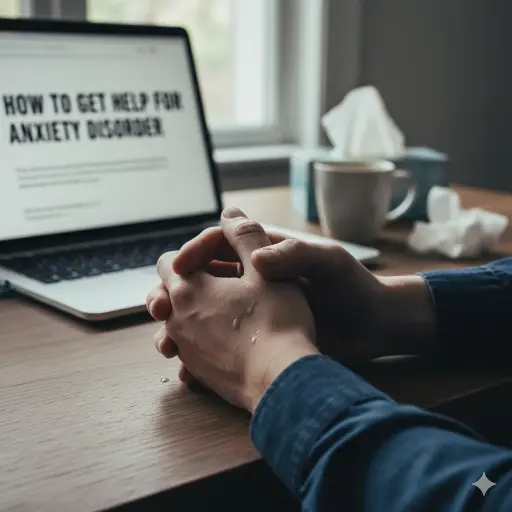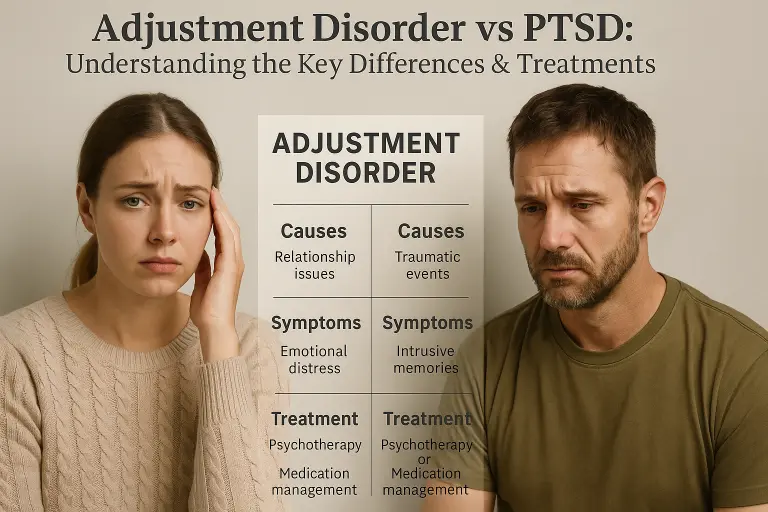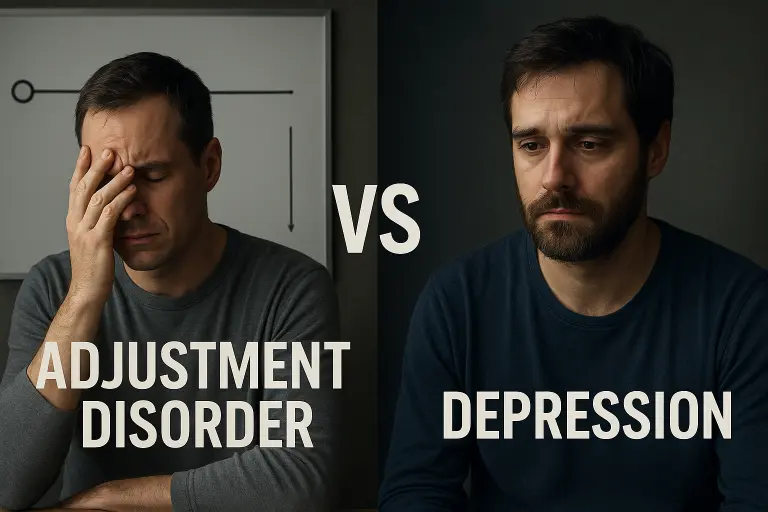How Behavioral Health Services Can Help Manage Phobias
Effective Strategies for Overcoming Phobias with Professional Support

Understanding and Addressing Phobias Through Behavioral Health Services
Phobias are intense, irrational fears that can significantly impair an individual's daily functioning. Fortunately, behavioral health services offer effective and evidence-based interventions to help manage and treat these fears. This article explores the role of mental health professionals, various therapy options, supportive resources, and self-help strategies that empower individuals to overcome their phobias and regain control over their lives.
The Nature and Symptoms of Phobias
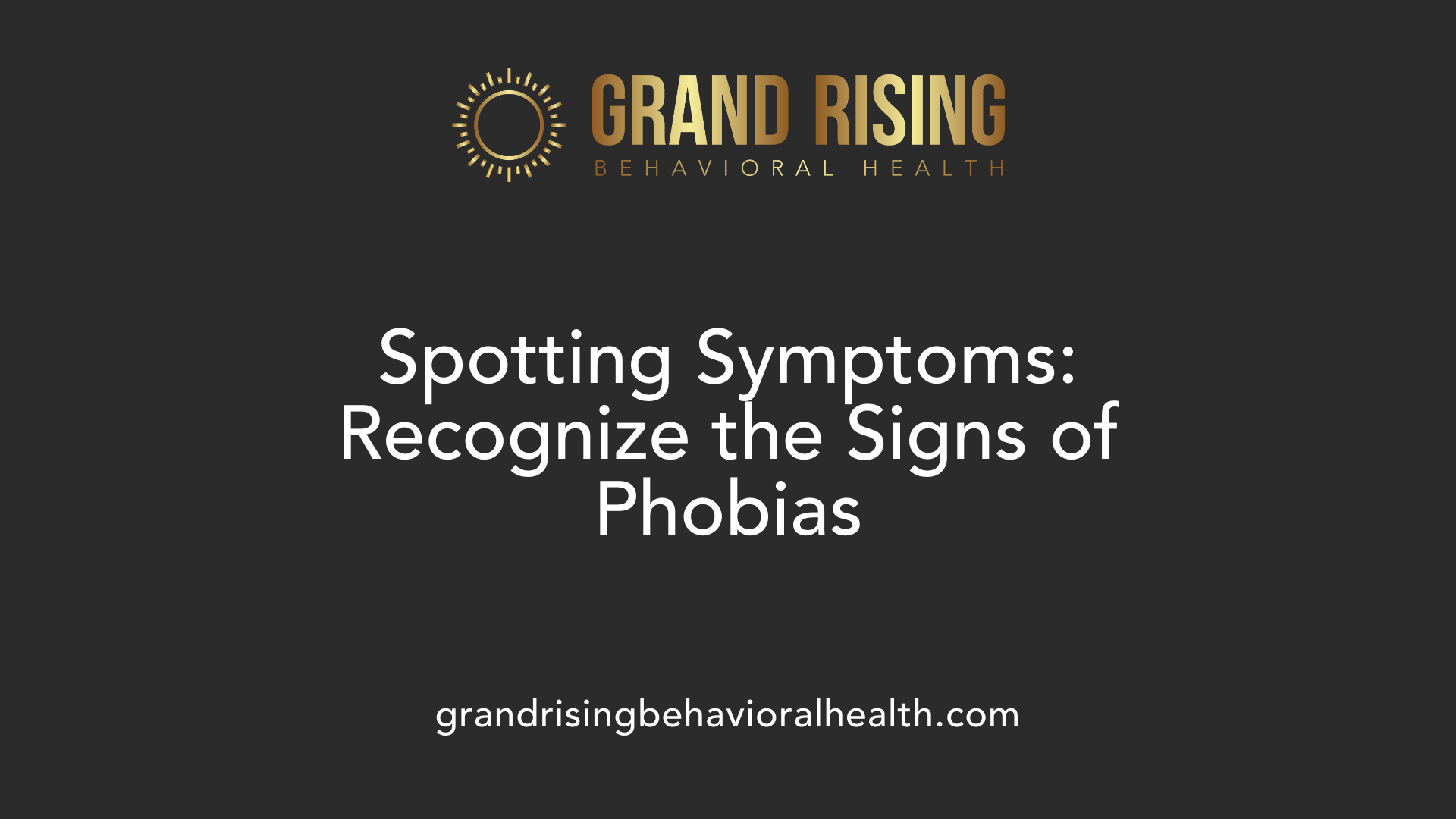
What constitutes a phobia?
A phobia is an intense, irrational fear of a specific object or situation that poses little or no actual danger. These fears can significantly interfere with daily activities and overall well-being. Most often, phobias develop during childhood, although they can manifest at any age, and they vary in severity and types.
Common types of phobias and their triggers
There are several common categories of phobias, each triggered by different fears:
| Type of Phobia | Example Triggers | Description |
|---|---|---|
| Animal phobias | Snakes, spiders, dogs | Fear of specific animals or insects |
| Natural environment fears | Heights, storms, water | Fear of natural elements or phenomena |
| Situational fears | Flying, enclosed spaces, bridges | Fear linked to specific situations or places |
| Blood-injury-injection fears | Medical procedures, needles | Fear of blood, injuries, or medical interventions |
Symptoms and educational insights into phobias
Individuals with phobias often experience physical and emotional symptoms when faced with their fear. Some common symptoms include:
- Rapid heartbeat or palpitations
- Sweating
- Dizziness or lightheadedness
- Trembling or shaking
- Shortness of breath or difficulty breathing
- Chest tightness
- Feelings of panic or powerlessness
These symptoms can be severe enough to interfere with daily routines, social interactions, and even work. Recognizing the signs of phobias is essential for seeking appropriate treatment. Effective therapy options include cognitive-behavioral therapy, exposure therapy, and, in some cases, medication such as antidepressants or beta blockers. Early intervention helps in managing symptoms and improving quality of life, highlighting the importance of understanding and addressing phobias professionally.
How Behavioral Health Services Support Diagnosis and Individualized Treatment
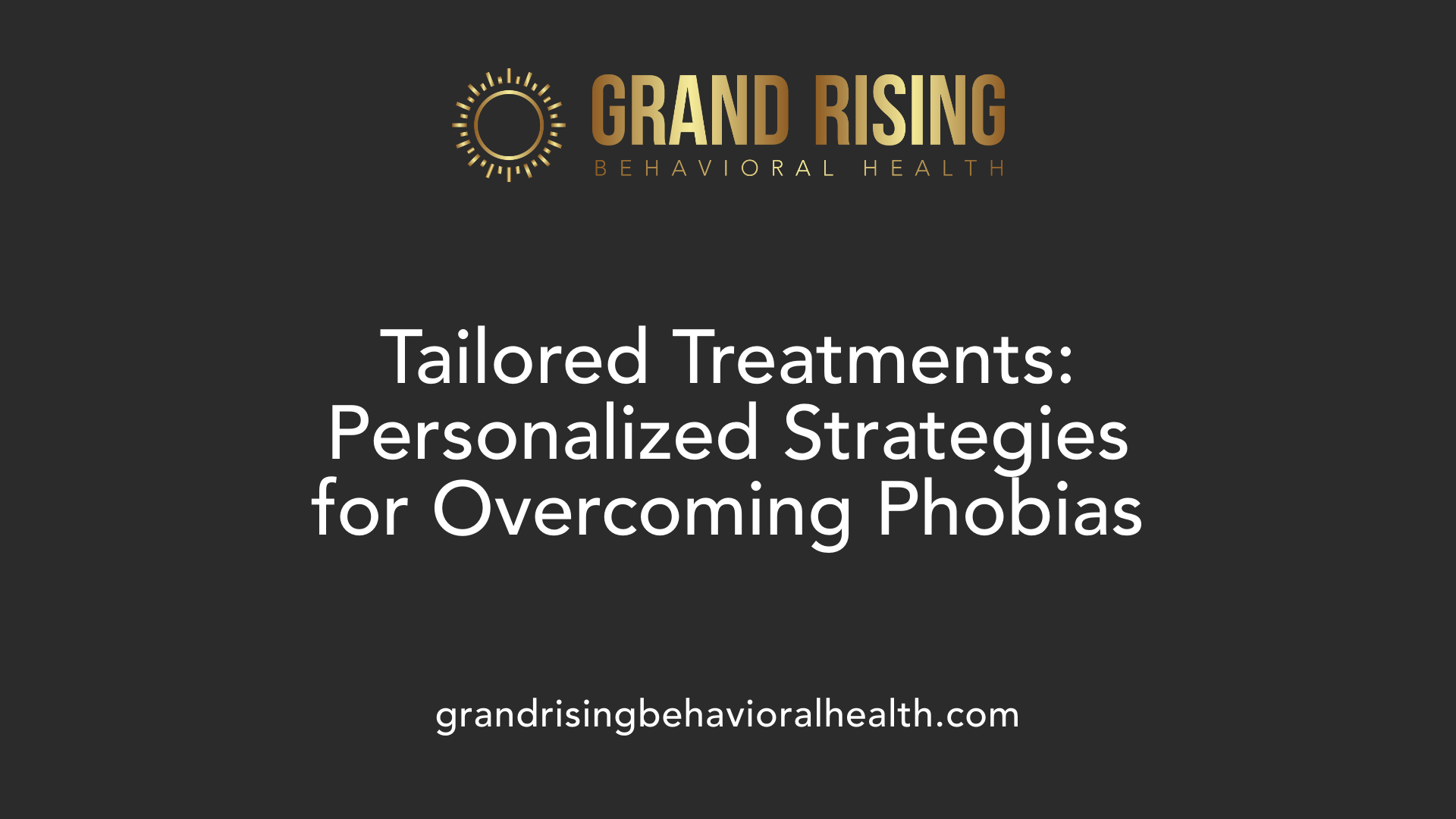
What assessment procedures are used to identify specific phobias?
Diagnosing specific phobias involves a clinical evaluation that includes discussing personal and medical history, symptoms, and risk factors with a healthcare or mental health professional. Usually, the professional asks about the feared object or situation, how it affects daily life, and the intensity of the fear. They may also use standardized questionnaires or checklists designed to pinpoint the presence of a specific phobia.
The assessment helps to differentiate phobias from other anxiety-related conditions, such as generalized anxiety disorder or social anxiety. It’s also crucial in identifying any underlying issues that could influence treatment options.
How do mental health professionals contribute to the diagnosis?
Mental health experts, such as psychologists, psychiatrists, or licensed clinical social workers, play a vital role in accurately diagnosing phobias. They evaluate symptoms through interviews and observation, ensuring that the fears are irrational and persistent enough to meet diagnostic criteria.
These professionals also assess the severity of the phobia, associated physical and emotional responses, and the impact on daily functioning. This comprehensive evaluation informs the development of a tailored treatment plan.
How are personalized treatment plans developed incorporating therapy and medication?
Once a diagnosis is confirmed, mental health professionals craft individualized treatment strategies. These often combine psychological interventions like cognitive-behavioral therapy (CBT), which includes exposure therapy and cognitive restructuring, with medication when necessary.
Therapy is designed to gradually expose the individual to the feared object or situation in a safe, controlled manner, aiming to desensitize and empower the person. Techniques such as relaxation exercises and mindfulness are integrated to manage anxiety.
Medication options include antidepressants like SSRIs, beta-blockers, or sedatives to help control physical symptoms of anxiety, especially in severe phobias. The combination of therapy and medication is tailored to each person’s needs, severity of symptoms, and response to treatment.
| Assessment Step | Method Used | Purpose | Outcome |
|---|---|---|---|
| Initial interview | Clinical history & symptom review | Understand fears and impact | Diagnosis confirmation & severity assessment |
| Standardized questionnaires | Phobia checklists | Quantify anxiety levels | Tailor treatment intensity |
| Observation & behavioral assessment | Direct observation, role-playing | Identify avoidance behaviors | Improve therapy planning |
This comprehensive approach helps to address both the psychological and physiological aspects of phobias, resulting in a more effective and supportive recovery process.
Therapeutic Approaches for Managing Phobias
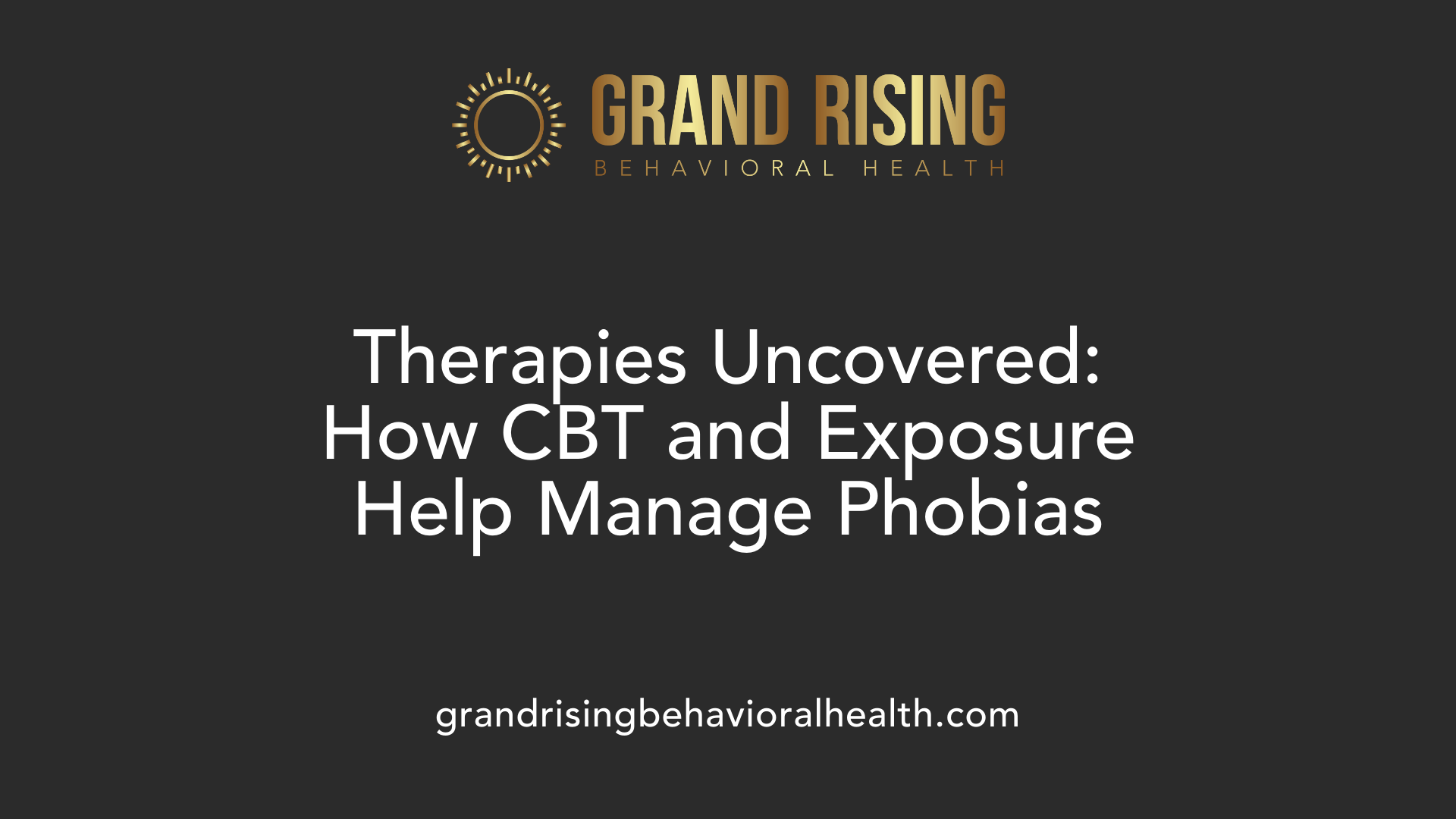
Overview of CBT and exposure therapy
Cognitive Behavioral Therapy (CBT) is a widely used psychological treatment that helps individuals understand and change their thought patterns, behaviors, and emotional responses related to phobias. A main component of CBT for phobias is exposure therapy, which involves gradually confronting the feared object or situation. This systematic approach helps reduce anxiety by desensitizing the person and empowering them to manage their reactions more effectively.
Exposure therapy is a practical method within CBT that involves different techniques to expose individuals to their fears in controlled settings. This can include real-life exposure, imagining the feared object, or using virtual reality scenarios, depending on the person's needs and the specific phobia.
Types of exposure therapy (in vivo, imaginal, virtual reality)
There are various methods of exposure therapy tailored to different fears and comfort levels:
| Type of Exposure | Description | Suitable For |
|---|---|---|
| In vivo exposure | Directly facing the real feared object or situation | Phobias like height, animals |
| Imaginal exposure | Visualizing the feared situation or object | Situations that are hard to recreate physically |
| Virtual reality exposure | Using simulated environments to mimic real fears | Complex fears like flying or public speaking |
Each type aims to gradually increase tolerance, helping individuals gain confidence and reduce their fear responses.
How therapies help desensitize fears and change negative thought patterns
Therapies like CBT and exposure therapy work by breaking the cycle of fear and avoidance. As individuals repeatedly face their fears, the intense anxiety usually diminishes — a process called habituation.
Simultaneously, therapy helps change negative thought patterns through techniques like cognitive restructuring. This approach encourages replacing catastrophic thoughts like "I will panic" or "I cannot handle this" with more balanced, factual beliefs.
Mindfulness and relaxation exercises are often integrated to help manage immediate anxiety during exposure sessions and foster resilience over time.
| Treatment Component | Purpose | Effect |
|---|---|---|
| Gradual exposure | Reduce fear sensitivity | Builds confidence and control |
| Cognitive restructuring | Change negative thoughts | Lessens catastrophic thinking |
| Relaxation techniques | Manage physical symptoms | Supports more effective exposure |
These combined methods create a comprehensive pathway toward overcoming phobias, allowing individuals to regain control and improve their quality of life.
Use of Medication in Phobia Management
Are medications used for phobia treatment?
Medications are generally not the primary approach for treating phobias. Evidence shows that they are often less effective when used alone. Instead, psychotherapy, especially cognitive-behavioral therapy (CBT), remains the cornerstone of effective treatment.
Types of medications used
| Medication Type | Examples | Purpose and Additional Details |
|---|---|---|
| Selective Serotonin Reuptake Inhibitors (SSRIs) | Fluoxetine, sertraline | Used to manage anxiety and prevent panic attacks related to phobias, often prescribed off-label for this purpose |
| Beta-blockers | Propranolol | Help control physical symptoms such as rapid heartbeat, trembling, and sweating during anxiety-provoking situations like flying or public speaking |
| Benzodiazepines | Diazepam, lorazepam | Provide rapid relief of acute anxiety symptoms but are generally recommended for short-term use due to potential dependency risks |
Situations where medication may be helpful
Medications can be particularly useful in specific scenarios, such as when immediate symptom relief is needed or when exposure therapy alone is insufficient.
For example, beta-blockers may be prescribed for short-term use during a specific event, like a flight or presentation. Benzodiazepines can ease severe anxiety episodes temporarily but are usually not advised for ongoing management due to dependence potential.
Antidepressants like SSRIs may be prescribed regularly to reduce overall anxiety levels, helping the individual cope better with phobic situations.
Limitations of medication as primary treatment
Despite their usefulness in managing symptoms, medications have notable limitations. Many medications do not cure the underlying fear but only alleviate physical symptoms.
There is a significant risk of relapse after stopping medication, and some drugs can lead to tolerance or dependence if used long-term. As a result, medications are generally recommended as an adjunct to psychological therapies rather than as standalone solutions.
The most effective treatment for phobias combines therapy—such as exposure therapy and CBT—with medication when necessary, providing a comprehensive approach to overcoming or managing fears.
Additional insights
| Treatment Approach | Effectiveness | Limitations | Recommended Use |
|---|---|---|---|
| Psychotherapy (CBT, exposure therapy) | Over 90% success rate | Time-intensive, requires active participation | First-line treatment |
| Medications | Varying efficacy, useful for symptom control | Dependence, relapse risk, limited to symptom management | As supplementary support |
| Lifestyle strategies | Reduce overall anxiety | Not a substitute for therapy or medication | Supportive therapy or during treatment |
Overall, medication plays a supportive role in phobia management, particularly for short-term relief or severe symptoms, but is most effective when combined with behavioral and psychological interventions.
Support Resources and Self-Help Strategies for Managing Phobias
Are there support resources and self-help strategies for managing phobias?
Yes, managing phobias often involves a combination of professional support and self-help techniques. Support from mental health professionals, such as psychologists or licensed counselors, is crucial in developing personalized treatment plans. These plans frequently include therapies like cognitive-behavioral therapy (CBT) and exposure therapy, which gradually help individuals confront and reduce their fears.
Support groups and community organizations provide additional emotional backing and practical advice. Organizations such as the National Alliance on Mental Illness (NAMI) and Mental Health America offer educational materials, support networks, and resources to help individuals understand and cope with their fears.
Self-help strategies are also valuable, especially when complemented by professional guidance. These include gradually exposing oneself to feared objects or situations in a controlled way, known as gradual exposure. Relaxation exercises like deep breathing, progressive muscle relaxation, and mindfulness meditation can help control physical symptoms of anxiety.
Lifestyle adjustments play a significant role in managing phobias. Regular physical activity, balanced diet, adequate sleep, and reducing stimulants such as caffeine can reduce overall anxiety levels.
Cognitive-behavioral techniques, including challenging irrational thoughts and developing more realistic perspectives, empower individuals to manage anxiety better. Self-care, support from loved ones, and participation in self-help groups can foster resilience and enhance the effectiveness of other treatments.
Overall, a layered approach that combines professional therapies, support networks, and self-help strategies offers the most comprehensive way to manage phobias effectively and improve quality of life.
The Impact of Untreated Phobias and the Benefits of Professional Intervention
What are the consequences of not treating phobias?
Untreated phobias can lead to serious long-term issues. If neglected, these intense fears may worsen over time, causing individuals to avoid situations or objects that trigger their anxiety. This avoidance behavior can significantly limit daily activities, impacting personal, social, and professional life.
Furthermore, untreated phobias often contribute to increased anxiety levels, panic attacks, and physical symptoms such as rapid heartbeat and dizziness. Over time, these can develop into chronic anxiety disorders or depression, making it harder to function and reducing overall quality of life.
What are the long-term effects on mental and physical health?
Long-term avoidance and heightened anxiety related to phobias can increase the risk of social isolation, loneliness, and emotional distress. The constant state of fear may also lead to sleep disturbances, difficulty concentrating, and physical health issues like hypertension or weakened immune responses.
Research shows that the persistence of phobias can impair mental resilience and coping skills, making it difficult to manage everyday stresses. Conversely, addressing phobias early helps prevent these adverse effects, promoting healthier mental and physical well-being.
How can professional treatment improve quality of life?
Professional interventions such as cognitive-behavioral therapy (CBT) and exposure therapy are highly effective in managing and overcoming phobias. These treatments focus on gradually exposing individuals to their fears and challenging irrational thoughts, which reduces anxiety and avoidance.
Therapists may use techniques like systematic desensitization, virtual reality exposure, and cognitive restructuring to help build confidence and resilience. When combined with medications like antidepressants or beta-blockers, these approaches can further control physiological symptoms.
As a result, individuals experience improved daily functioning, increased social participation, and a higher overall quality of life. Access to compassionate, evidence-based mental health services enables people to regain control over their fears and lead more fulfilling lives.
| Aspect | Impact | Treatment Approach |
|---|---|---|
| Mental health | Reduced anxiety, lowered risk of depression | CBT, exposure therapy |
| Physical health | Less stress-related health issues | Medications, relaxation techniques |
| Daily functioning | Greater participation in activities | Behavioral therapy, lifestyle strategies |
| Social life | Improved relationships and social interactions | Support groups, family therapy |
Engaging with mental health professionals offers a pathway to overcoming phobias effectively. Early diagnosis and treatment can transform lives, turning debilitating fears into manageable challenges.
Empowering Recovery Through Support and Therapy
Overcoming a phobia is a challenging process, but with the help of behavioral health services, individuals can develop effective coping strategies, reduce fear responses, and restore their overall well-being. Professional therapies like CBT and exposure therapy, combined with appropriate medication in some cases, serve as powerful tools in this journey. Support resources, self-help strategies, and the active involvement of mental health professionals are crucial in achieving lasting change. By seeking timely intervention and embracing comprehensive treatment options, individuals can significantly improve their quality of life and regain confidence in facing their fears.
References
- Treatment - Phobias - NHS
- Specific phobias - Diagnosis and treatment - Mayo Clinic
- Phobia treatment | Types of mental health problems - Mind
- Exposure Therapy: What It Is, What It Treats & Types - Cleveland Clinic
- Therapy for Treating Phobias - Talkspace
- How Cognitive Behavioral Therapy Can Treat Fear and Phobias
- Understanding Common Phobias & How to Treat Them | CSP Global
- Self-help - Phobias - NHS
More Resources
A team ready to start your journey.
Get in touch — today.
We are a safe space – a haven for exceptional individuals to receive discreet, personalized, in-person treatment and care.
.avif)



